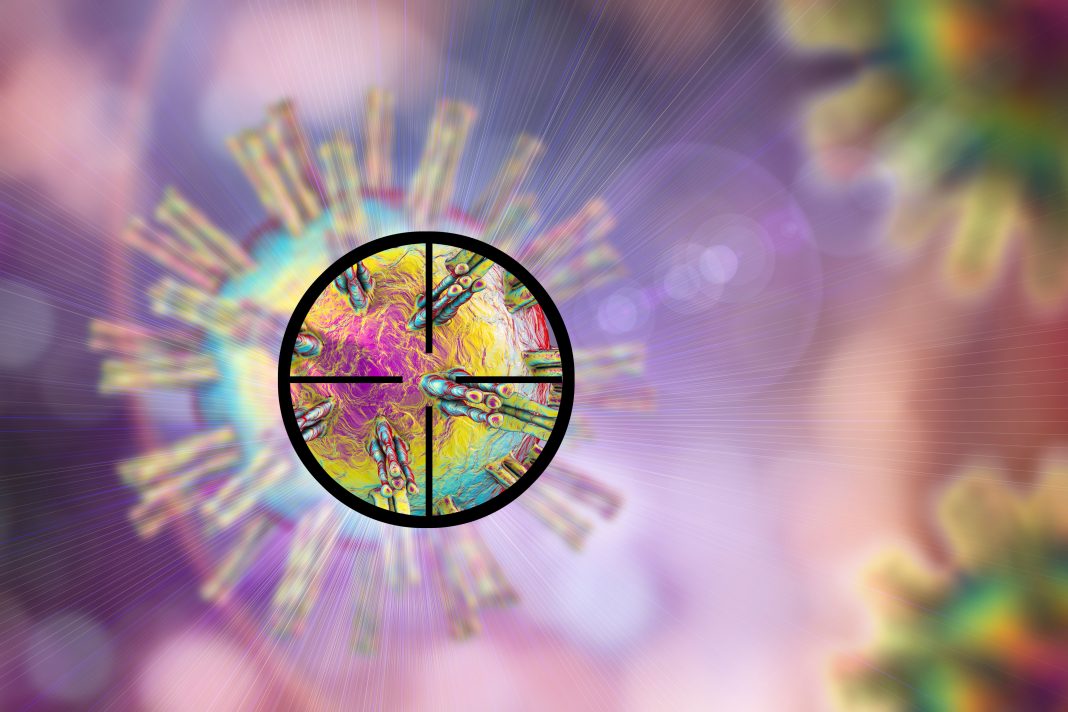Given the dearth of therapeutics and vaccines to combat the COVID-19 pandemic, there is a pressing need for understanding as much about the virus as possible. Despite the enormous surge in research on SARS-CoV-2, and researchers working around the clock to place as many puzzle pieces as possible, many unanswered questions remain. A team from MIT and Boston Children’s Hospital have connected some of the dots, pinpointing the likely cell types the virus infects. And, showing that one of the body’s main defenses against viral infections may actually help the virus infect those very cells.
The study, published as the paper, “SARS-CoV-2 receptor ACE2 is an interferon-stimulated gene in human airway epithelial cells and is detected in specific cell subsets across tissues,” in Cell will help focus efforts to understand what SARS-COV-2 does in the body, why some people are more susceptible, and how best to search for treatments, the researchers said.
The team, led by Jose Ordovas-Montanes, PhD and Alex Shalek, PhD, knew from previous research that the SARS-CoV- 2 spike (S)-protein binds ACE2, and in concert with host proteases—principally TMPRSS2—promotes cellular entry. However, the cell subsets targeted by the virus in host tissues, and the factors that regulate ACE2 expression, remained unknown. Here, the team explored multiple aspects of SARS-CoV-2 infection, to uncover putative targets of SARS-CoV-2 among tissue-resident cell subsets, to discover the role of ACE2 in infection, and suggest why COVID-19 varies so widely between patients.
Ordovas-Montanes and Shalek had been studying different cell types throughout the human respiratory system and intestine. They also had gathered data from primates and mice. In February, when news of the COVID-19 outbreak hit, they began exploring these data in the context of the pandemic. “We started to look at cells from tissues such as the lining of the nasal cavity, the lungs, and gut, based on reported symptoms and where the virus has been detected,” said Ordovas-Montanes. “We wanted to provide the best information possible across our entire spectrum of research models.”
SARS-CoV-2 susceptible cells
Recent research had found that SARS-CoV-2—like the closely related SARS-CoV that caused the SARS pandemic—uses the ACE2 receptor to gain entry into human cells, aided by the enzyme TMPRSS2. That led Ordovas-Montanes and Shalek and colleagues to ask a simple question: Which cells in respiratory and intestinal tissue express both ACE2 and TMPRSS2?
To address this question, the team turned to single-cell RNA sequencing. They found that only a tiny percentage of human respiratory and intestinal cells, often well below 10%, make both ACE2 and TMPRSS2. Those cells fall in three types: goblet cells in the nose that secrete mucus; lung cells known as type II pneumocytes that help maintain the alveoli (the sacs where oxygen is taken in); and one type of so-called enterocytes that line the small intestine and are involved in nutrient absorption.
Sampling from nonhuman primates showed a similar pattern of susceptible cells.
“Many existing respiratory cell lines may not contain the full mix of cell types, and may miss the types that are relevant,” Ordovas-Montanes noted. “Once you understand which cells are infected, you can start to ask, ‘How do these cells work?’ ‘Is there anything within these cells that is critical for the virus’s life cycle?’ With more refined cellular models, we can perform better screens to find what existing drugs target that biology, providing a stepping stone to go into mice or nonhuman primates.”
Intriguing interferon
But it was the study’s second finding that most intrigued the scientists. They discovered that the ACE2 gene, which encodes the receptor used by SARS-CoV-2 to enter human cells, is stimulated by interferon—one of the body’s main defenses when it detects a virus. Interferon actually turned the ACE2 gene on at higher levels, potentially giving the virus new portals to get in.
“ACE2 is also critical in protecting people during various types of lung injury,” noted Ordovas-Montanes. “When ACE2 comes up, that’s usually a productive response. But since the virus uses ACE2 as a target, we speculate that it might be exploiting that normal protective response.”
Interferons, in fact, are being tested as a treatment for COVID-19. Would they help, or would they do more harm than good? That’s not yet clear.
“It might be that in some patients, because of the timing or the dose, interferon can contain the virus, while in others, interferon promotes more infection,” said Ordovas-Montanes. “We want to better understand where the balance lies, and how we can maintain a productive antiviral response without producing more target cells for the virus to infect.”
ACE inhibitors and cytokine storms
The findings may also raise new lines of inquiry around ACE inhibitors. These drugs are commonly used to treat hypertension, which has been linked to more severe COVID-19 disease. Are ACE inhibitors affecting people’s risk?
“ACE and ACE2 work in the same pathway, but they actually have different biochemical properties,” Ordovas-Montanes cautioned. “It’s complex biology, but it will be important to understand the impact of ACE inhibitors on people’s physiological response to the virus.”
It’s also too soon to try to relate the study findings to the “cytokine storm,” a runaway inflammatory response that has been reported in very sick COVID-19 patients. Cytokines are a family of chemicals that rally the body’s immune responses to fight infections, and interferon is part of the family.
“It might be that we’re seeing a cytokine storm because of a failure of interferon to restrict the virus to begin with, so the lungs start calling for more help. That’s exactly what we’re trying to understand right now.”



